Confessions of a Compact-Camera Shooter
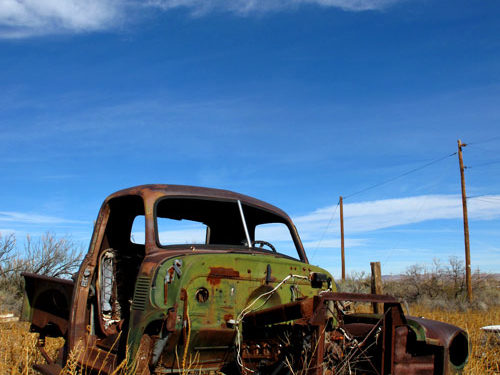
…for once in my life I wanted to just walk around and totally enjoy the experience…
Guilty as charged. It’s true, I took most of the photographs in this article with my Canon PowerShot G10 compact camera, including the opening photograph of a rusting truck. The locations for my shoots were Socorro, New Mexico, and nearby Bosque del Apache, where I was co-leading a photography workshop with famed wildlife photographer Greg Downing for NatureScapes (www.naturescapes.net).
I use the word “confessions” in jest because I’m known for shooting with top-of-the-line digital SLR cameras that produce knockout images in all lighting conditions, indoors and out. In addition, these digital SLRs accept more than 50 lenses and dozens of accessories that expand the camera’s capabilities. So like some pros I know, I’d have to plead the Fifth (tongue in cheek) when asked about shooting with a less-than-the-best camera.
Why did I use a compact camera for taking important images in these totally cool locations—places I’d never been before? I wanted to see if I could get good shots with a basic camera. What’s more, for once in my life I wanted to just walk around and totally enjoy the experience without lugging around my 40-lb SLR backpack, although I did have it nearby in the trunk of my car at all times.
So friends, here are some compact-camera images, along with some important info about compact cameras. I promise to tell the whole truth and nothing but the truth.
Opening arguments
I love this shot. It’s clean, meaning that it has very little digital noise. I took it with my compact camera on the first day of the trip in Bosque del Apache. I put the camera on a tripod, set the ISO to 100, the exposure mode to Av (Aperture Priority), activated the self-timer, and took the shot.

At low ISO settings, compact cameras deliver relatively low-noise images as long as the light level isn’t too low. It’s in low light and at high ISO settings where noise increases, and it’s in low light and at high ISO settings where digital SLRs really shine when it comes to minimizing noise.
I also took this shot with my compact camera. Check out the detail and color before you read on. Take your time. Nice shot, don’t you think

Okay, I’m kidding. I actually took this shot earlier that morning with a Canon EOS-1Ds Mark II and 24–105mm lens, using the same settings that I used on my compact camera. It’s also one of my favorite images from the shoot. It’s a beautifully clean image, and I challenge anyone to see, at least on the pages of this magazine, any difference in image quality between this and the previous image. That goes for making an 8×10″ print of each image, too.
Here’s a test shot taken earlier that morning with the compact camera. For this shot, I set the ISO to 800 and hand-held the camera to test the noise, which is evident in the image, but that was expected. So one of the key differences between the two types of cameras is noise.
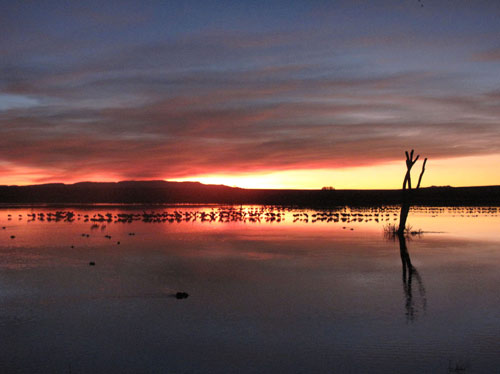
Cross-examination
Another key difference, and the reason I will not get divorced from my digital SLRs, is that I can use dozens of lenses on my digital SLRs, whereas my compact camera has only a built-in zoom. For this photograph, I used a Canon 400mm DO IS lens on my Canon EOS-1D Mark III to get the shot.
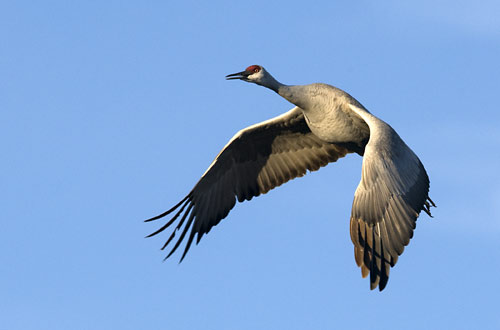
Unlike my compact camera, my digital SLR focuses much faster; has no shutter lag (although it’s not bad in the G10); has more focusing points (allowing it to focus more accurately in more situations); has a higher frame rate, not to mention a much larger image sensor for higher-quality images and enlargements; and an on-sensor noise-reduction feature.
Perhaps what I miss most in compact cameras are very wide lens settings, such as 14mm, 15mm, and 17mm. I especially like those focal lengths for landscapes and when shooting in close quarters indoors. And, of course, I miss the telephoto zooms. But you know what, whenever possible I do what we did before we had zoom lenses: I zoom with my feet!
In the compact camera’s defense, it has many of the exposure modes (Av, Tv, P, M) that my digital SLR offers. It even has exposure compensation, offers a histogram, and features an overexposure warning. What’s more, it shoots movies—not high-def like my Canon 5D Mark II, but movies good enough for fun and for posting on YouTube. Speaking of YouTube, one of my Bosque del Apache movies is posted on YouTube (www.youtube.com). Type Rick Sammon in the Search field to check it out.
Witness tampering
This shot from a compact camera was taken in bright light with the ISO set to 100. Check out the color, detail, sharpness, and lack of noise. I took this picture so that I could compare it to the following picture.

Here’s another shot of the bus taken shortly before sunset. This time the bus was in the shade, and to get the depth-of-field and shutter speed I needed, I had to set my ISO to 400. You may not be able to see the grain in the image in this magazine, but it’s there in the shadow areas. Also, the picture looks a bit flat.

No problem. Photoshop to the rescue! With a few basic adjustments, some in Adobe Camera Raw, I was able to transform a lackluster shot into an image with vibrant colors.
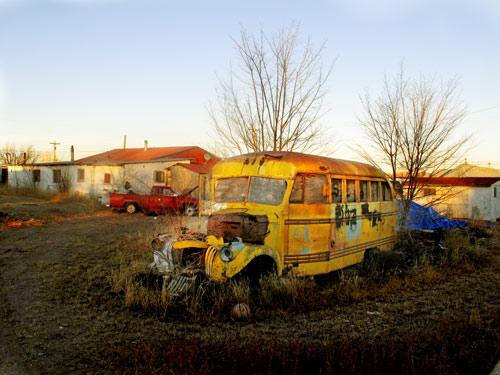
A confession on the stand
Okay, now it’s time for another confession: All the compact-camera images you see here were created from JPEG files. That’s right! Rick “RAW Rules” Sammon shot JPEGs for the first time in nine years to test the camera’s capabilities. And guess what? Processing those images in Camera Raw (which you can do in Photoshop CS3 and CS4), combined with a few additional tweaks in Photoshop, yielded some very nice images, including this photo of a caboose.
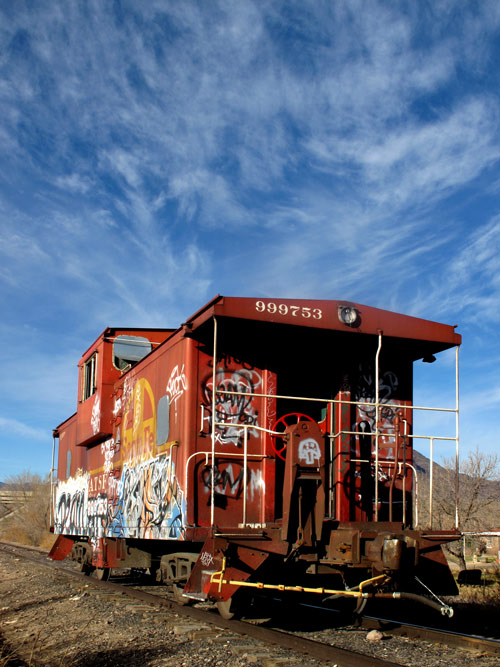
The mug shot
I’ll end this article with a photograph of me that was taken with my G10 during the presentation at the NatureScapes event. Surely it’s a grab shot with a harsh shadow caused by the on-camera flash. But it’s a fun shot, and that’s what compact-camera photography is about—having fun without the bag-drag that’s associated with professional photography.
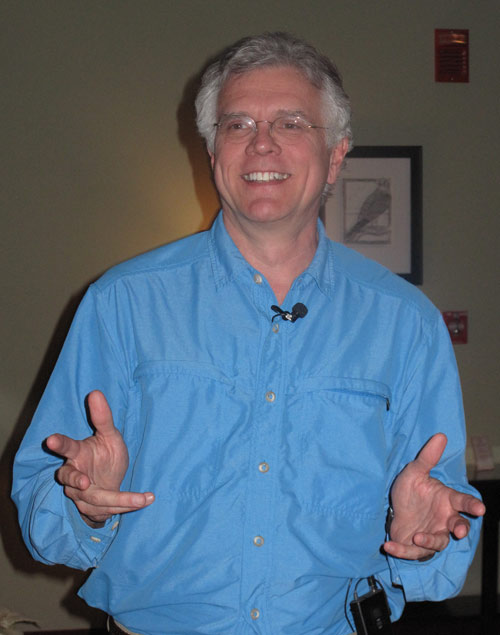
It’s also about knowing what the compact camera can and can’t do, and how to use the camera’s capabilities to get great shots—some, like the second photograph in this article, can’t be differentiated from a photo taken with a high-end digital SLR.
From now on, I’ll never leave home without my compact camera, and I’ll never stop shooting with SLRs for my serious work.


